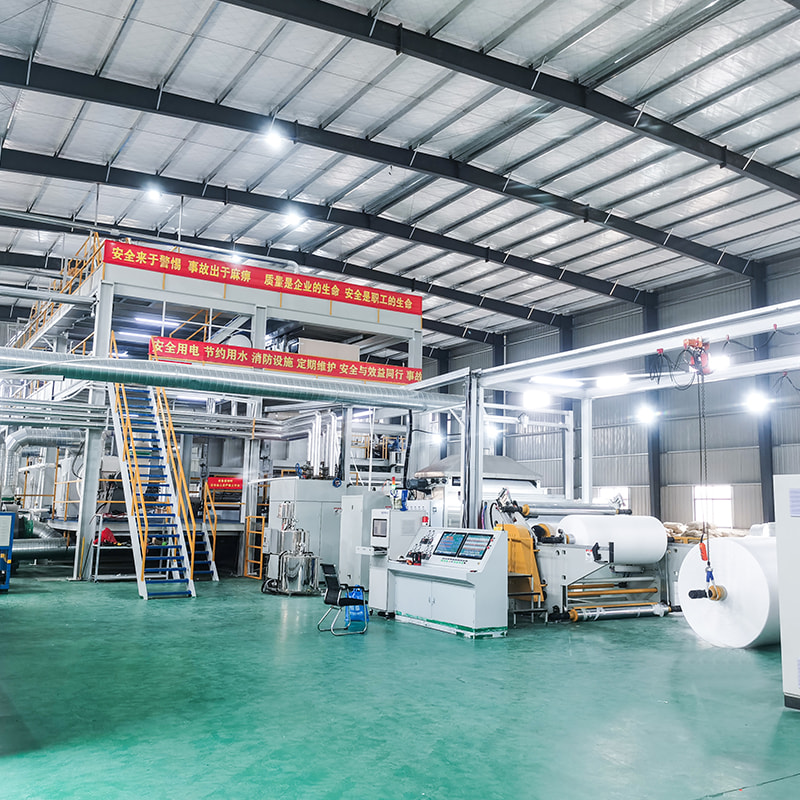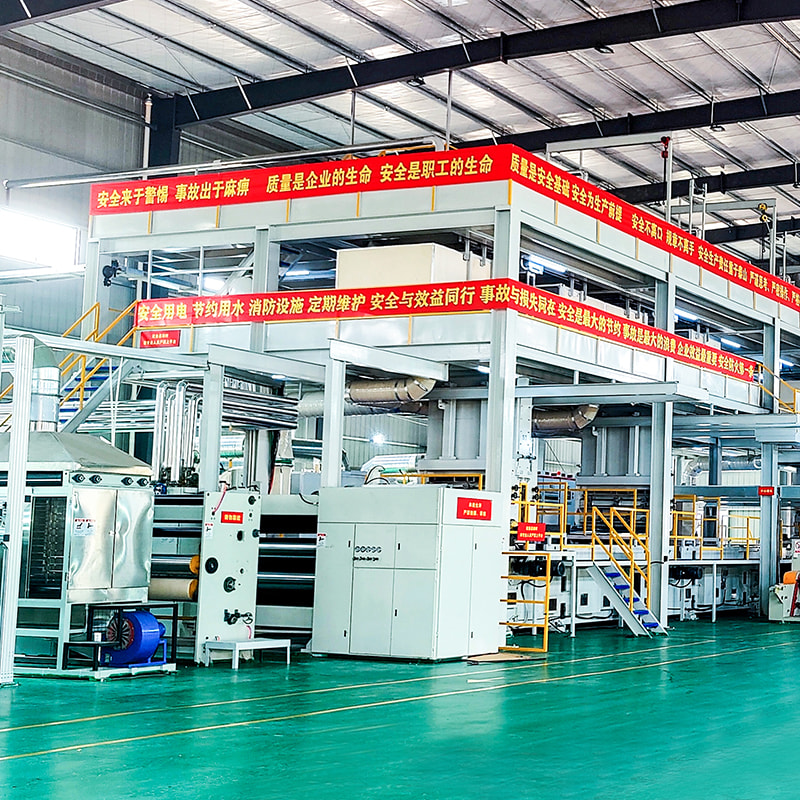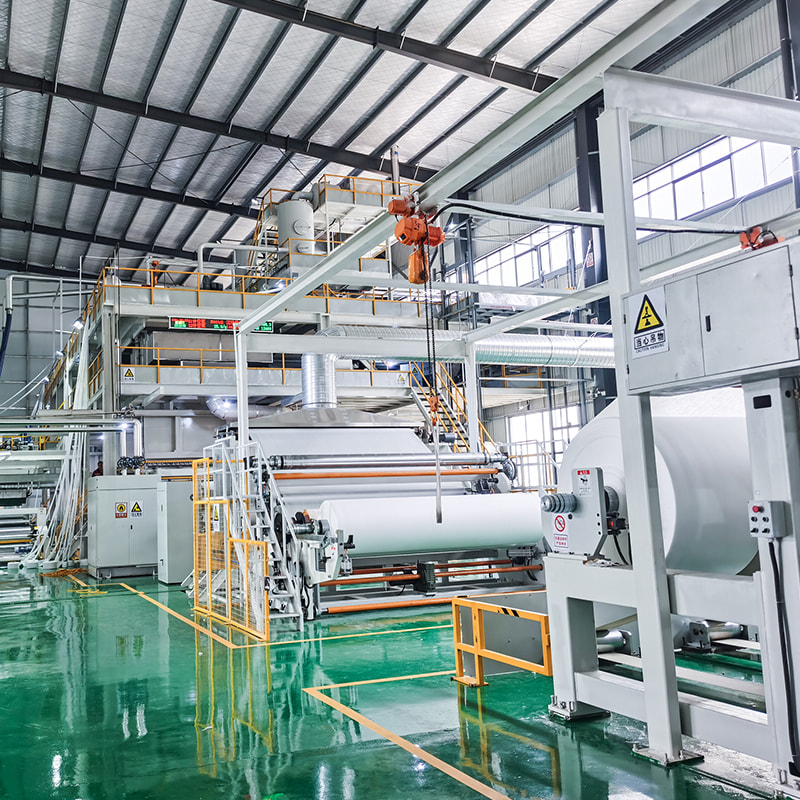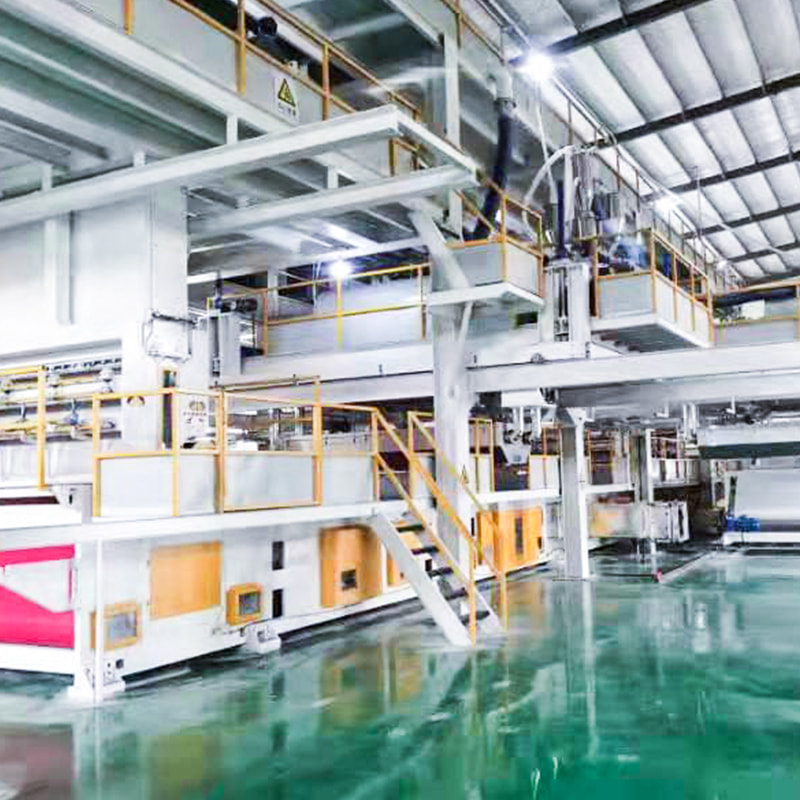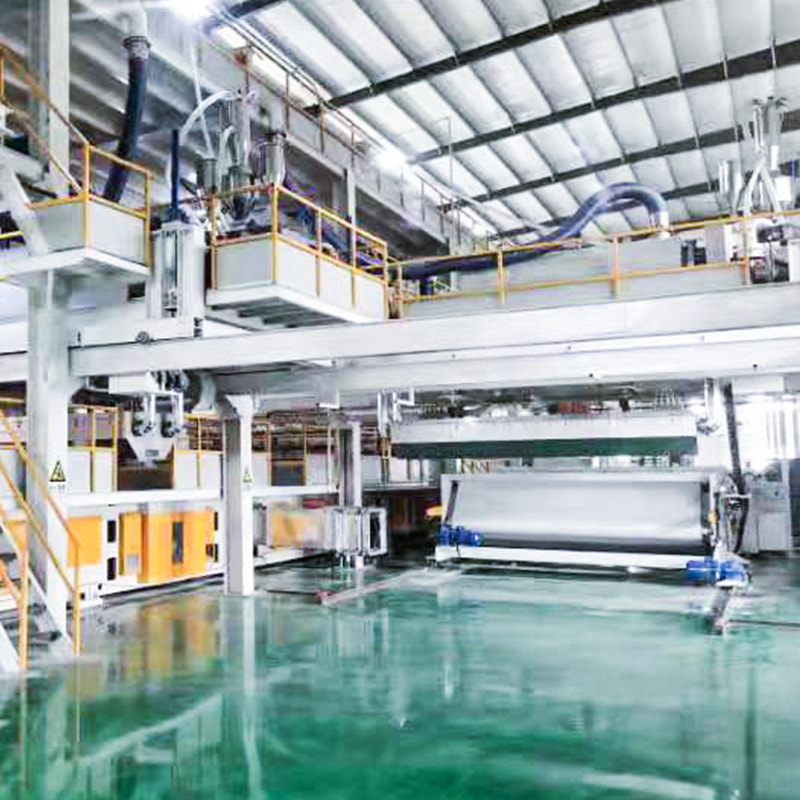Practical Guide to Nonwoven Fabric Making Machine — Types, Workflow, Parameters & Maintenance
1. Types of Nonwoven Fabric Making Machines
Nonwoven fabric making machines are built for different production methods and end-use requirements. Understanding the main types helps match machine selection to product specifications (GSM, strength, filtration, softness):
- Spunbond lines — continuous filament extrusion (PP, PE) producing strong, low-GSM fabrics for geotextile, hygiene & packaging.
- Meltblown lines — fine microfiber webs for filtration, masks, and high surface area applications.
- SMS (Spunbond–Meltblown–Spunbond) composite lines — combine layers in-line for balanced strength + filtration.
- Needle-punch (mechanical) machines — produce durable, bulky felts from staple fibers (polyester, PET) for carpets, automotive, filters.
- Hydroentanglement (spunlace) lines — use high-pressure water jets to entangle fibers, yielding soft, drapable wipes and medical fabrics.
2. Key Components & Inline Workflow of a Typical Line
Most continuous nonwoven lines share similar modules; knowing them helps diagnose issues and plan upgrades.
2.1 Extrusion / Fiber Formation
(Spunbond/meltblown) Extruder melts polymer and forces it through spinnerets. Meltblown uses hot high-velocity air to attenuate microfibers; spunbond draws and quenches filaments before web formation. Typical control points: melt temperature, die head pressure, polymer throughput (kg/h).
2.2 Web Formation and Laydown
Air or belt conveyors spread filaments into a uniform web. Key variables: conveyor speed (m/min), distance from die to collector, air flow patterns. Uneven laydown causes GSM variation and weak spots.
2.3 Bonding Unit (Thermal / Needling / Hydro)
Bonding fixes the web structure: thermal calendering (pressure + heated rollers), ultrasonic bonding for narrow spots, needle-punching for mechanical entanglement, or hydroentangling using water jets. Typical calender temperature ranges depend on polymer (e.g., 120–200°C for PP/PE) and nip pressure (kN).
2.4 Finishing, Coating & Winding
Finishing may include coating, laminating, calendaring, embossing, slitting and automatic winding. Tension control and proper winding torque prevent wrinkles and telescoping.
3. Critical Process Parameters & Recommended Ranges
Control parameters determine fabric quality. Below are practical targets and what to watch for during ramp-up.
| Parameter | Typical Range | Why it matters |
| Line Speed | 20–250 m/min (process dependent) | Affects GSM, bonding dwell, and production throughput. |
| GSM (target) | 10–1000 g/m² (typical product-specific) | Defines end-use (light wipes vs heavy geotextiles). |
| Melt Temp (PP) | 220–260 °C | Controls fiber integrity and die build-up risk. |
| Calender Temp / Pressure | 120–200 °C / adjustable nip kN | Determines bond strength and elongation. |
| Hydro Pressure (spunlace) | 50–200 bar | Higher pressure = stronger entanglement, less bulk. |
4. Common Production Problems, Root Causes & Remedies
This troubleshooting checklist targets frequent defects and practical fixes on the shop floor.
| Problem | Likely Cause | Immediate Action |
| GSM fluctuation | Inconsistent polymer throughput or web laydown | Stabilize feed pump, synchronize gearboxes, check air flows. |
| Weak bond / delamination | Low calender temp/pressure or insufficient dwell | Increase calender temp slightly; verify nip pressure and speed. |
| Surface specks / die build-up | Polymer degradation or contaminated raw material | Purge extruder, lower melt temp, inspect pellets for contaminants. |
| Telescoping wind\n | Uneven tension or web misalignment | Adjust dancer roll tension, align edge guides, re-winding parameters. |
5. Routine Maintenance Checklist (Daily / Weekly / Monthly)
A proactive maintenance program reduces downtime and extends machine life. Below are practical tasks organized by frequency.
5.1 Daily
- Inspect die face and spinneret for clogging; perform light purging if required.
- Check oil/grease levels on bearings and takeups; verify tension sensors.
- Record key process values (GSM, line speed, melt pressure) for traceability.
5.2 Weekly
- Clean and inspect calender rollers; check for surface damage or build-up.
- Verify heater bands, thermocouples and PID controller performance.
- Test safety interlocks and emergency stop circuits.
5.3 Monthly
- Alignment check for rollers, conveyors and edge guiding systems; shim as necessary.
- Inspect hydraulic and pneumatic lines for leaks; replace worn seals.
- Calibrate measurement instruments (GSM sensors, thickness gauges).
6. Buyer Considerations & Simple Cost Estimation
Selecting the right machine requires balancing throughput, automation level, quality targets and after-sales support.
6.1 Questions to ask suppliers
- What is guaranteed GSM tolerance and line uptime for a given speed?
- Which parts are consumable and typical lead times for spares?
- Availability of commissioning, operator training and preventive maintenance contracts.
6.2 Rough cost elements to budget
Consider machine capex, utilities (power, compressed air, water for spunlace), raw material cost, labor, and building/site modifications (foundations, exhaust, electrical). Example ballpark cost categories:
- Small pilot line (single process): equipment + installation ≈ US$50k–150k.
- Mid-capacity production line (integrated SMS or spunlace): US$200k–1M depending on automation.
- High-end fully integrated turnkey lines: US$1M+ (custom requirements, multi-layers, high speeds).
7. Short Checklist for First Production Run
Before you run the first full shift, follow this stepwise checklist to reduce startup defects.
- Verify raw material spec and moisture level; run inbound QC tests on pellets or staple fibers.
- Set and record baseline machine settings (temperatures, pressures, speeds) in a recipe file.
- Run a short trial spool, measure GSM and tensile; adjust calender and speed to target.
- Ensure waste handling and filtration (for meltblown fines or hydro water) are operational.
If you want, I can convert this into a printable one-page SOP or a machine-specific checklist (e.g., spunbond vs spunlace) tailored to your target GSM and production capacity.


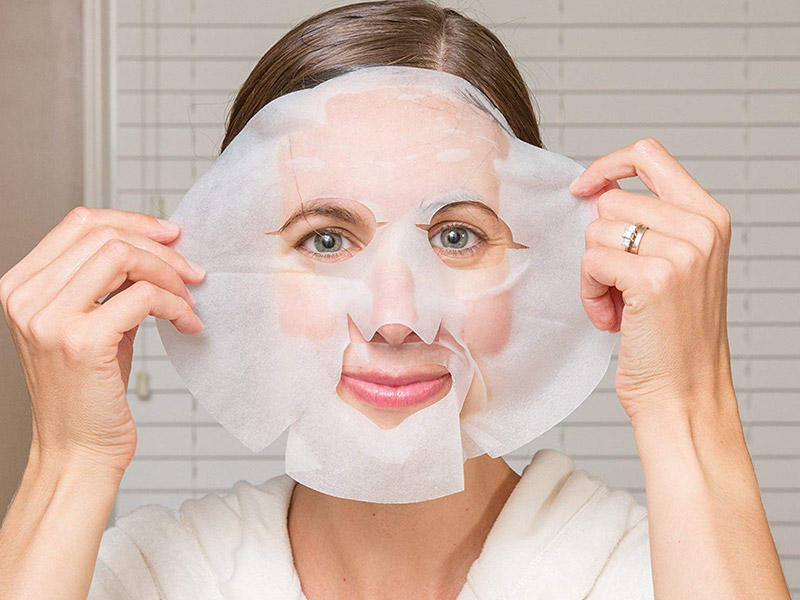
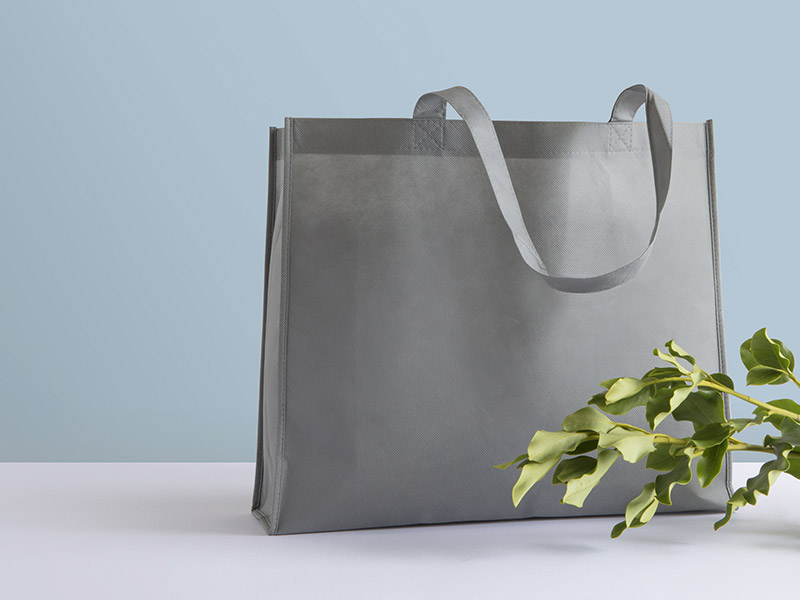
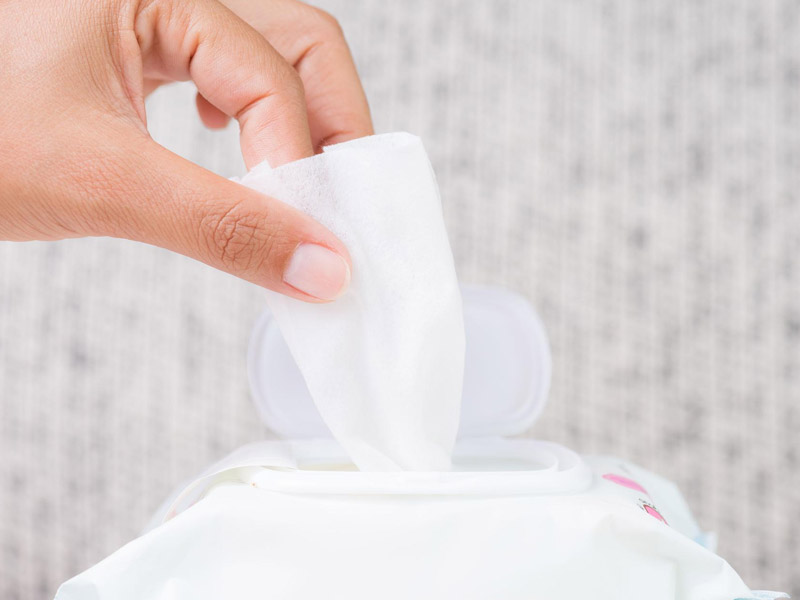
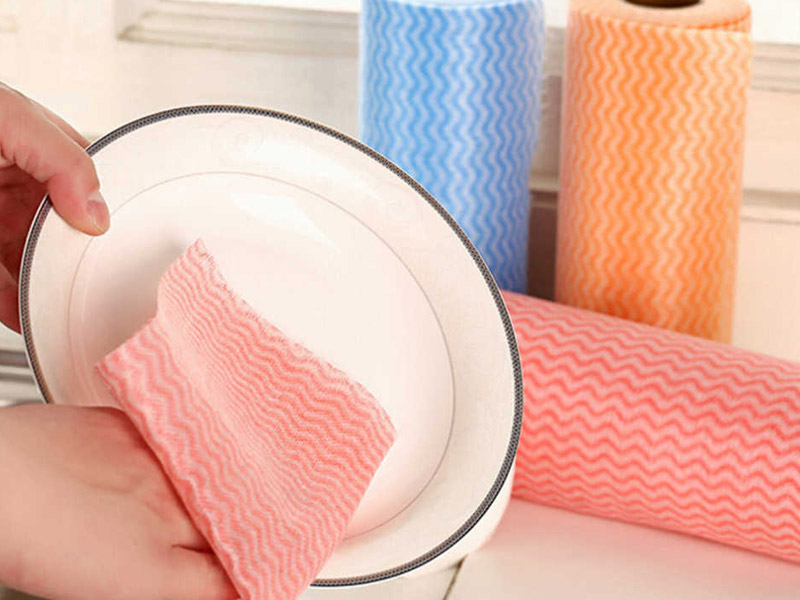
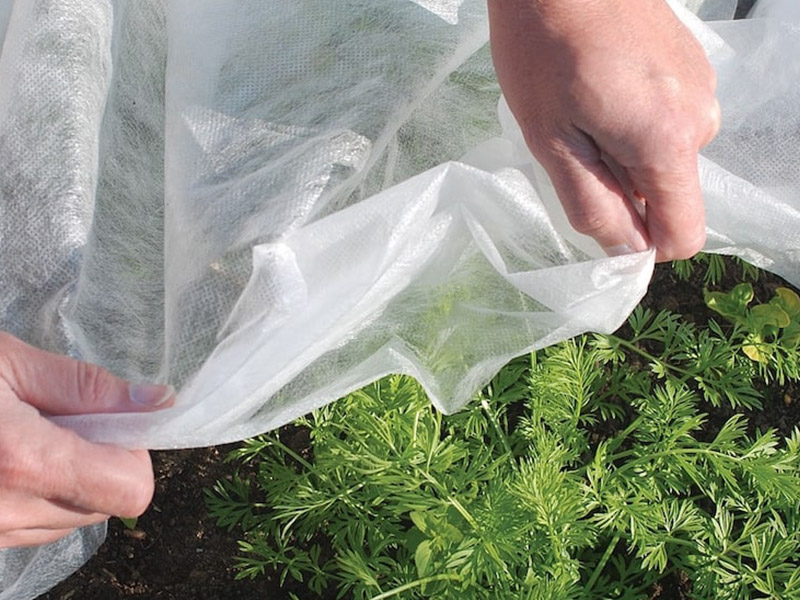
 English
English 中文简体
中文简体 русский
русский عربى
عربى